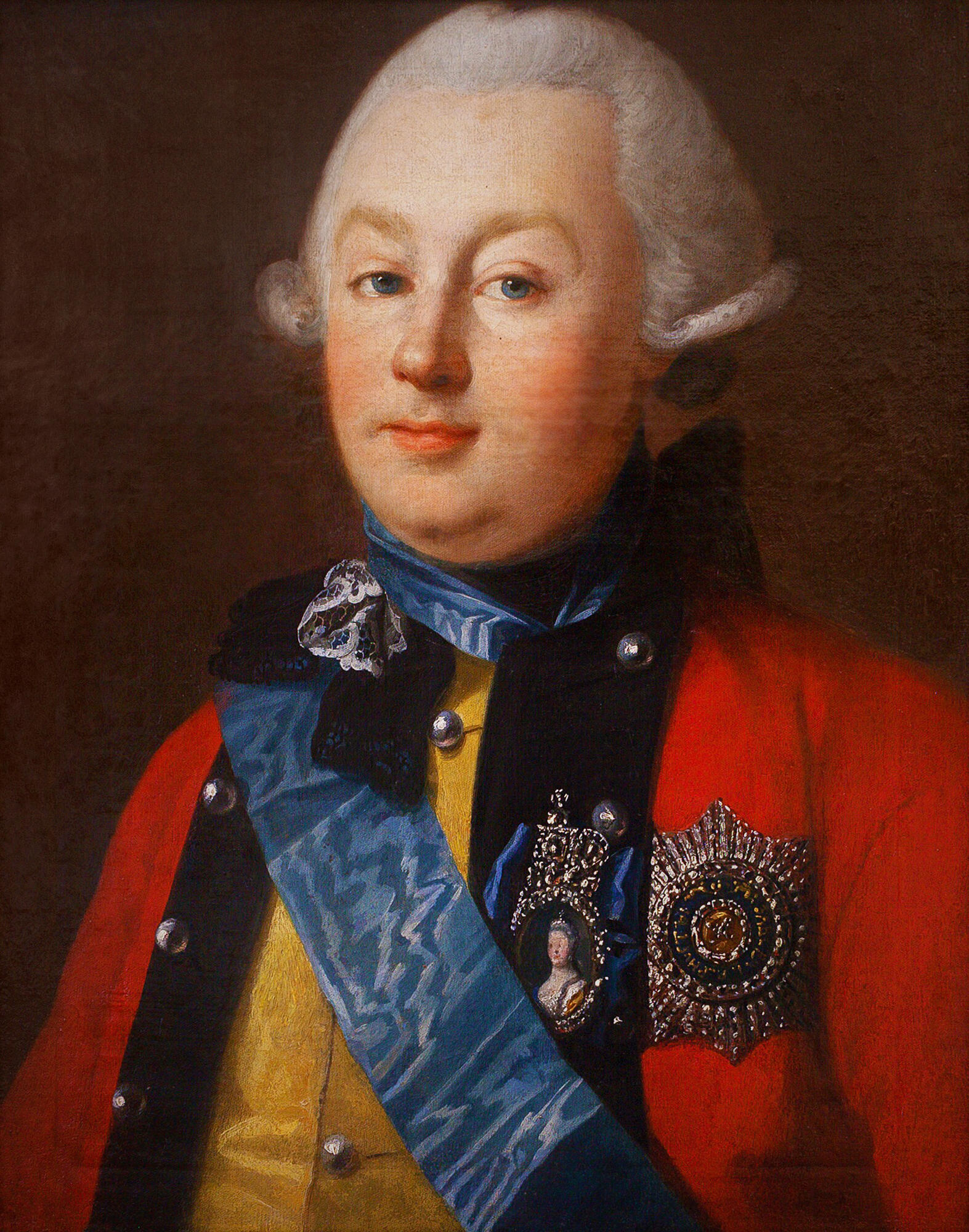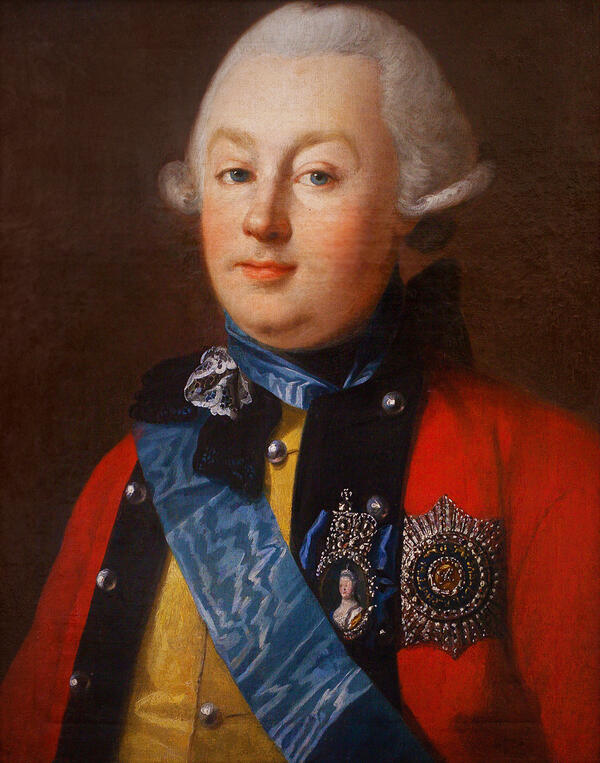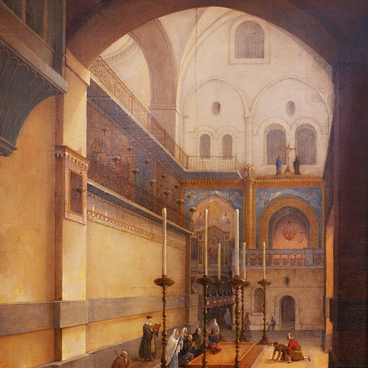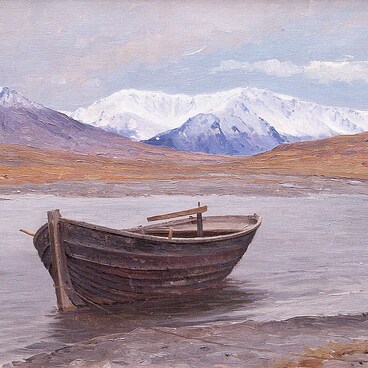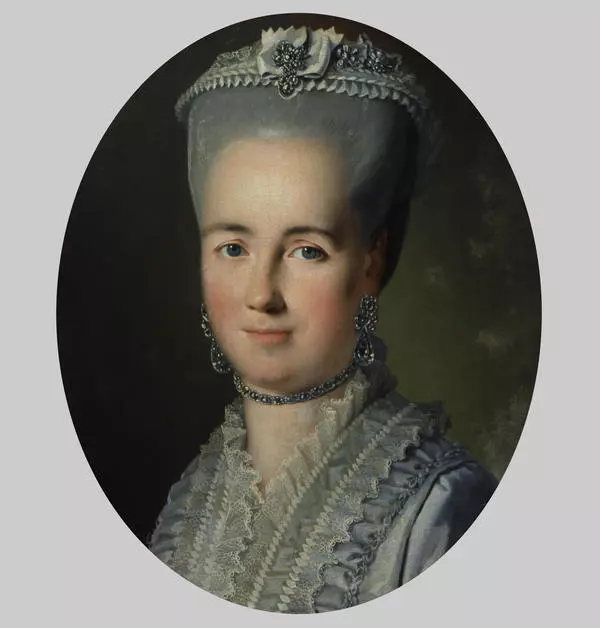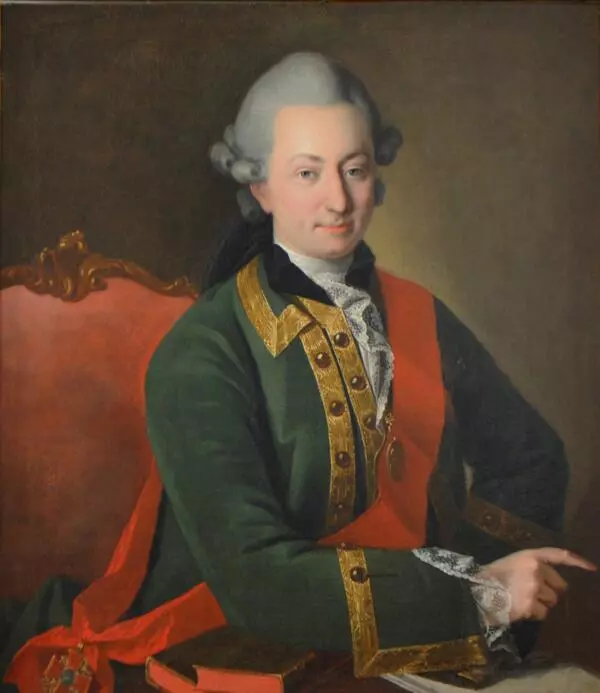The portrait of the Russian military leader, statesman and favorite of Catherine II, Grigory Orlov, was painted by an academician of painting, a popular portraitist of the Catherine II era, Carl Ludwig Johann Christineck.
Christineck was born into a German family in St. Petersburg. His mentor was Lukas Konrad Pfandzelt, a German painter, restorer and curator of the Hermitage Museum. Christineck got the opportunity to paint portraits of Russian aristocrats thanks to his sister Regina-Louise: she was married to court banker Baron Friedrichs, who was Grigory Orlov’s protégé. In 1785, Carl Ludwig Christineck was awarded the title of academician of painting.
Writer and art historian Jacob Stehlin (1709–1785) wrote about his works. He considered Christineck “a good urban painter and a successful portraitist”. About 100 works of the artist have survived: it means that he was a prominent portraitist of his time. Admiral Nikolay Mordvinov, the Orlov brothers, and Prince Alexander Vyazemsky commissioned canvases from Christineck.
In the 1760s, Grigory Orlov was very popular, many artists often painted his portraits. The canvas, which is housed in the museum, is a ceremonial portrait of a courtier, typical for that time: Orlov is depicted in an adjutant-general’s uniform, with a blue ribbon and a diamond star of the Order of St. Andrew the Apostle the First-Called — the highest order of Russia. The favorite of the Empress openly demonstrates his highest social status. In the center of the composition, the artist placed a miniature portrait of Catherine II in a diamond frame on a blue moiré ribbon sash with a bow.
Christineck opted for a bright range of pure colors: yellows, reds, blues, whites. He painted in dense smooth brush strokes, which give Orlov’s image a pleasing and sleek look. Orlov personally posed for the artist, however Christineck also used earlier images of the prince as a reference — the paintings by Pietro Rotari and Vigilius Eriksen.
Orlov became a favorite of the future empress Catherine in 1759, their relationship lasted 12 years. In 1762, their son Aleksey Bobrinsky was born. He was raised by the valet and trusted servant of Catherine Vasily Shkurin. In the same year, together with his brothers, Orlov participated in the palace coup, as a result of which Catherine ascended to the throne. On the day of her coronation, October 3, 1762, Catherine II granted the Orlov brothers count titles, and later, in 1772, allowed Grigory Orlov to take the title of the Prince of the Holy Roman Empire.
Christineck was born into a German family in St. Petersburg. His mentor was Lukas Konrad Pfandzelt, a German painter, restorer and curator of the Hermitage Museum. Christineck got the opportunity to paint portraits of Russian aristocrats thanks to his sister Regina-Louise: she was married to court banker Baron Friedrichs, who was Grigory Orlov’s protégé. In 1785, Carl Ludwig Christineck was awarded the title of academician of painting.
Writer and art historian Jacob Stehlin (1709–1785) wrote about his works. He considered Christineck “a good urban painter and a successful portraitist”. About 100 works of the artist have survived: it means that he was a prominent portraitist of his time. Admiral Nikolay Mordvinov, the Orlov brothers, and Prince Alexander Vyazemsky commissioned canvases from Christineck.
In the 1760s, Grigory Orlov was very popular, many artists often painted his portraits. The canvas, which is housed in the museum, is a ceremonial portrait of a courtier, typical for that time: Orlov is depicted in an adjutant-general’s uniform, with a blue ribbon and a diamond star of the Order of St. Andrew the Apostle the First-Called — the highest order of Russia. The favorite of the Empress openly demonstrates his highest social status. In the center of the composition, the artist placed a miniature portrait of Catherine II in a diamond frame on a blue moiré ribbon sash with a bow.
Christineck opted for a bright range of pure colors: yellows, reds, blues, whites. He painted in dense smooth brush strokes, which give Orlov’s image a pleasing and sleek look. Orlov personally posed for the artist, however Christineck also used earlier images of the prince as a reference — the paintings by Pietro Rotari and Vigilius Eriksen.
Orlov became a favorite of the future empress Catherine in 1759, their relationship lasted 12 years. In 1762, their son Aleksey Bobrinsky was born. He was raised by the valet and trusted servant of Catherine Vasily Shkurin. In the same year, together with his brothers, Orlov participated in the palace coup, as a result of which Catherine ascended to the throne. On the day of her coronation, October 3, 1762, Catherine II granted the Orlov brothers count titles, and later, in 1772, allowed Grigory Orlov to take the title of the Prince of the Holy Roman Empire.
